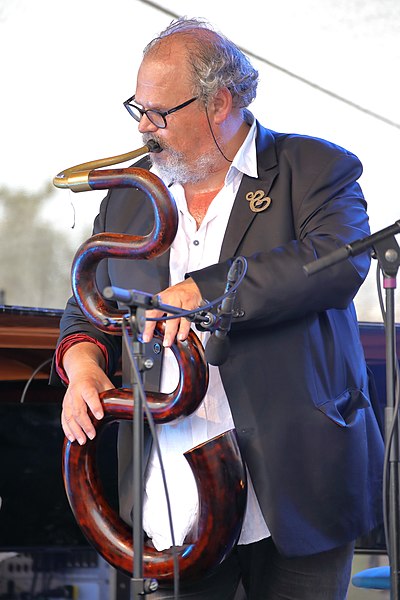The serpent is a low-pitched early wind instrument in the brass family developed in the Renaissance era. It has a trombone-like mouthpiece, with tone holes and fingering like a woodwind instrument. It is named for its long, conical bore bent into a snakelike shape, and unlike most brass instruments is made from wood with an outer covering of leather. A distant ancestor of the tuba, the serpent is related to the cornett and was used for bass parts from the 17th to the early 19th centuries.
Serpent, late 18th century Italy. Civic Museum of Modena
Michel Godard performs on a serpent in the Adrabesa Quartet, 2020
Image: Manifattura italiana, Serpentone, fine sec. XVIII. Museo Civico di Modena, foto P. Terzi
Image: Serpent in C MET DP249360 white background
Bass ( BAYSS) (also called bottom end) describes tones of low (also called "deep") frequency, pitch and range from 16 to 250 Hz (C0 to middle C4) and bass instruments that produce tones in the low-pitched range C2-C4. They belong to different families of instruments and can cover a wide range of musical roles. Since producing low pitches usually requires a long air column or string, and for stringed instruments, a large hollow body, the string and wind bass instruments are usually the largest instruments in their families or instrument classes.
A crew sets up a sound system, including large bass bins, in Jamaica in 2009.




